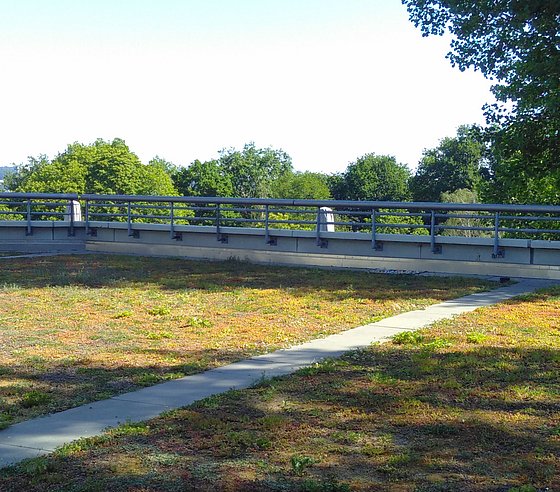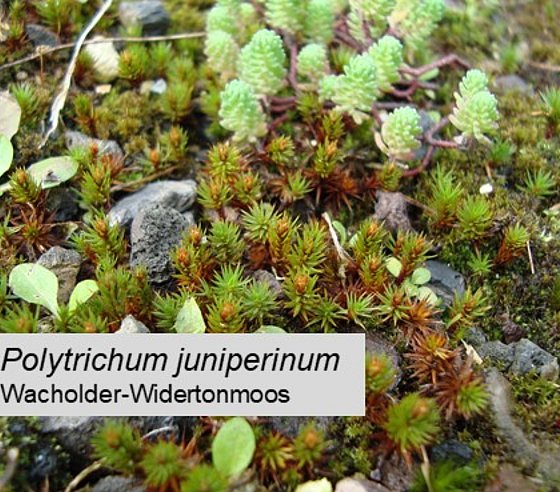


February - Green roofs
Roof greening is possible on both flat and pitched roofs. It ranges from thin layers of substrate with drought-resistant, low-growing plants (extensive greening), to higher ground structures on which shrubs and trees can grow (intensive greening).
However, plants on roofs usually have a tough time: they face high radiation intensity, dryness, wetness, a lack of nutrients, frost and limited root space. Mixed cultures, especially those containing sedum species, are often used for extensive greening. These belong to the thick-leaved plant family and are adapted to such extreme conditions. However, sedum mixtures with mosses or grasses are also used.
Long tradition of "green roofs"
One of the oldest examples of a roof garden is the 'Hanging Gardens of Semiramis', created in Babylon in the 6th century BC. They are considered to be one of the Seven Wonders of the Ancient World. In the past, green roofs were also used for insulation, for example in Scandinavian grass roofs or in overgrown wine cellars, or simply because people could not afford other materials. Green roofs were also widely used in Bauhaus architecture. In the 1980s, the focus of roof greening shifted towards extensive greening, which prioritised ecological aspects over direct use. Currently, up to eight million square metres of green roofs are added in Germany every year, on residential and industrial buildings, as well as underground car parks.
The advantages of green roofs are obvious, such as improving the indoor climate of rooms below and neighbouring rooms, and retaining water, as around half of the precipitation evaporates again instead of running off into the sewage system. Overall, green roofs improve the urban climate by increasing humidity through evaporation, reducing temperature through evaporative cooling and absorbing radiation, which prevents heat from being stored in the building fabric. Green roofs also provide a habitat for insects and birds. However, the disadvantages are economic: the installation costs can be relatively high, and green roofs require maintenance.
Green roofs at the University of Wuppertal
The flat roof of the ME 05 canteen on the Grifflenberg campus of the University of Wuppertal is currently covered in greenery. But why this particular location? The buildings below repeatedly suffered water damage as the roof could not drain away rainwater quickly enough during heavy rainfall. Additionally, the concrete and plank covering heated up considerably during hot summers with strong sunlight, as did the neighbouring rooms. The challenge here is that there are pioneer trees, such as robinia and poplars, above the canteen building. These can seed onto the green roof and must be removed, as larger shrubs or trees can damage the roof with their roots.
In addition to the canteen building, almost all of the student halls of residence of the Hochschulsozialwerk Wuppertal have been planted with green roofs — more than 90 per cent of them.
